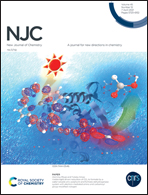Recyclable ZnS QDs as an efficient photocatalyst for dye degradation under the UV and visible light
Abstract
Energy-efficient and environmentally benign photocatalysts with enormous numbers of reaction sites activated by a wide light spectrum similar to that of sunlight to treat aqueous dye pollutants are of contemporary research interest. At the onset, an energy-friendly microwave radiation process was used to ascertain the single-step growth of 4 nm cubic ZnS quantum dots (QDs) without a capping agent. These QDs were characterized structurally by XRD, HRTEM, and EELS techniques and demonstrate unique optical properties, such as strong visible light absorption due to defects, quantum confinement effects, and bandgap energy values, evaluated using UV-Vis and photoluminescence measurements. Photocatalytic studies with methylene blue and methyl orange dyes with exposure to UV and visible light sources were performed to reveal the efficacy of ZnS QDs and understand their pertinent mechanisms. First-time complete degradation of both dyes in record low time under visible light irradiation were obtained, primarily due to large surface defects in pristine ZnS QDs. Furthermore, the fastest degradation of 10 ppm dye in 20 minutes with a UV-C source was successfully demonstrated. The technical importance with in-depth insights into the photocatalytic mechanism with the resonance and non-resonance energies of the bandgap value of ZnS QDs are elaborated. The recyclability of the photocatalyst was ascertained clearly up to the 3rd cycle. Thus, the efficacy of these ZnS QDs appears to be the most competent amongst other reports.



 Please wait while we load your content...
Please wait while we load your content...